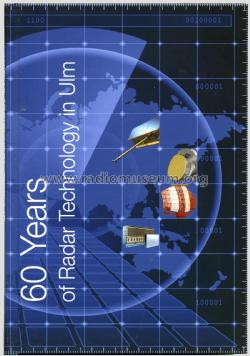For the past 60 years, since 1955, Airbus Defence and Space and its predecessor companies have been in the business of developing and producing radar systems. Starting with a team of less than 50 people, the company evolved into one of the leading centres of radar technology in Europe by building on the experience and contributions of its historical origins in TELEFUNKEN, AEG, TELEFUNKEN SYSTEMTECHNIK, MBB, Dornier, Siemens Sicherungstechnik and, more recently, EADS France.
Today, in 2014, over 600 engineers working in the radar division continue to drive the state of the art to provide highly innovative solutions to our worldwide customer base.
We would like to take this opportunity to present to you, our readers, an overview of the continuous development of radar technology in its various domains, as well as introducing you to the products produced by our company over the last 60 years.
Starting with a historical summary, this book then goes on to focus on the solutions and technologies chosen to solve the challenges posed by a modern radar development. These are the solutions which have enabled us to create many cutting-edge families of radar products since our inception in the 1950’s.
In this way we want to give you a deep insight into the origins of our product developments as well as an overview of the different radar applications, ranging from long waves to millimetre waves, from short distance high precision measurement devices to long range air surveillance systems.
We are sure that these insights will be of interest not only to our present and potential customers, but also for all students of radar, high frequency systems and signal processing. The contributions to this book have been written by present or former members of our development and product departments. This first-hand information may sometimes lead to terms and expressions typically used only by specialists, but it conveys a flavour of these challenging and highly inspiring activities.
The evolution of the process used to develop radar systems during these 60 years also reflects the significant extension of technology into new technical domains. First generation radars were mainly based on analogue high frequency technology and their development was dominated by antenna and high frequency specialists. Today, radar systems have become much more complex and are generally embedded in networked systems. Typically, their design starts with high level system considerations based on modelling and simulation to optimize the partitioning of the radar system into software and hardware components at all levels. Wherever possible, digital signal processing is employed, allowing for unprecedented accuracies and reproducibility. Built-in test systems and remote control interfaces provide early warning of potential performance deviations and in many cases allow remote maintenance.
However: the basic principles of the radar equations still remain valid and the propagation of waves still follows the rules of electromagnetic theory. Therefore we need a fascinating mixture of top level specialists coming from many different disciplines to achieve the performance of modern radars!
We hope that you will enjoy reading this book as much as we did in producing it!
Heinrich Daembkes
Ulm, October 2014 |

